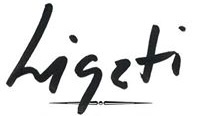By Peter Ligeti — Fine Art Photographer & Digital Painter
I often describe my creative process as resembling a random eyeball floater—those drifting, translucent shapes that wander through our field of vision. Much like these floaters, my ideas in fine art, digital painting, and abstract expressionism drift through my consciousness in constant motion. Each one represents a fragment of potential: a visual idea, a color vibration, a shape, or a fleeting memory waiting to become part of my digital and fine art world.
These floaters—some sharp, others diffuse and elusive—form the foundation of my fine art and digital painting process. They inspire what later evolves into my abstract mixed media artworks, merging visual art, expressionism, and digital design into a unified language of color and perception. Every fragment, whether real or imagined, contributes to the intricate layering that defines my work as both a fine art photographer and digital artist.
Layering: The Heart of My Abstract Expressionist Process
The act of layering lies at the core of my artistic expression. I often think of each composition as a twelve-layer cake, where every tier offers a different texture, tone, and rhythm. In my digital art and mixed media artwork, I combine elements of fine art photography, abstract painting expressionism, and digital media artwork to create depth and tension.
Each layer, whether crisp or dissolving, brings its own dimension. I approach my work from every direction—sometimes top-down, sometimes bottom-up—depending on what the evolving art in expressionism demands. This approach transforms randomness into rhythm, turning fragments into form. The resulting fine art digital abstraction bridges intuition and structure, chaos and clarity.
Construction, Deconstruction, and the Hidden Layers of Meaning
Creating each piece is a dance between building and dismantling. I begin by assembling random fragments—photographic details, digital textures, or mixed media forms—each meaningless on its own. As I continue, they evolve, merge, or dissolve into one another through a process I call visual excavation.
This process, common in contemporary digital art and abstract painting, mirrors the psychological layering of perception. I work intuitively, uncovering hidden “archaeological strata” in my art—layers of memory, light, and emotion. In every digital artwork, I’m searching for that moment when chaos aligns and meaning reveals itself.
Order Within the Randomness
At first glance, my process might appear purely random—just colors, movement, and digital fragments. Yet, over time, a visual order emerges. The layers begin to harmonize. Rhythm replaces noise. A pulse forms.
Each fragment, whether part of a digital wall art composition or a mixed media design, finds its home within the structure. This fusion of spontaneity and precision is where true art style modern expressionism thrives. The final image, though born from unpredictability, achieves a quiet inevitability—an equilibrium between the real and the imagined.
Between Photography and Digital Abstraction
My work exists in the liminal space between photography and painting—between observation and imagination. As a fine art photographer and digital painter, I see every frame as a study in light, color, and transformation.
Each piece in my digital landscape art or hybrid art collection reflects the way perception shifts over time. What I see through the lens blends with what I perceive in my mind’s eye. The floating fragments—those “random floaters” of sight and thought—become metaphors for how we process reality through the filters of memory and emotion.
From Chaos to Coherence
Ultimately, my creative process is an act of transformation. The random eyeball floater—once an invisible distraction—becomes a metaphor for the creative act itself. Through the interplay of fine art, digital media artwork, and abstract expressionism, I find meaning in movement and structure in spontaneity.
My finished digital paintings and fine art photography pieces are visual meditations on perception—how seeing, feeling, and imagining intersect. Each work is a reminder that clarity often emerges from chaos, and that the beauty of art lies in its ability to make the unseen visible.
